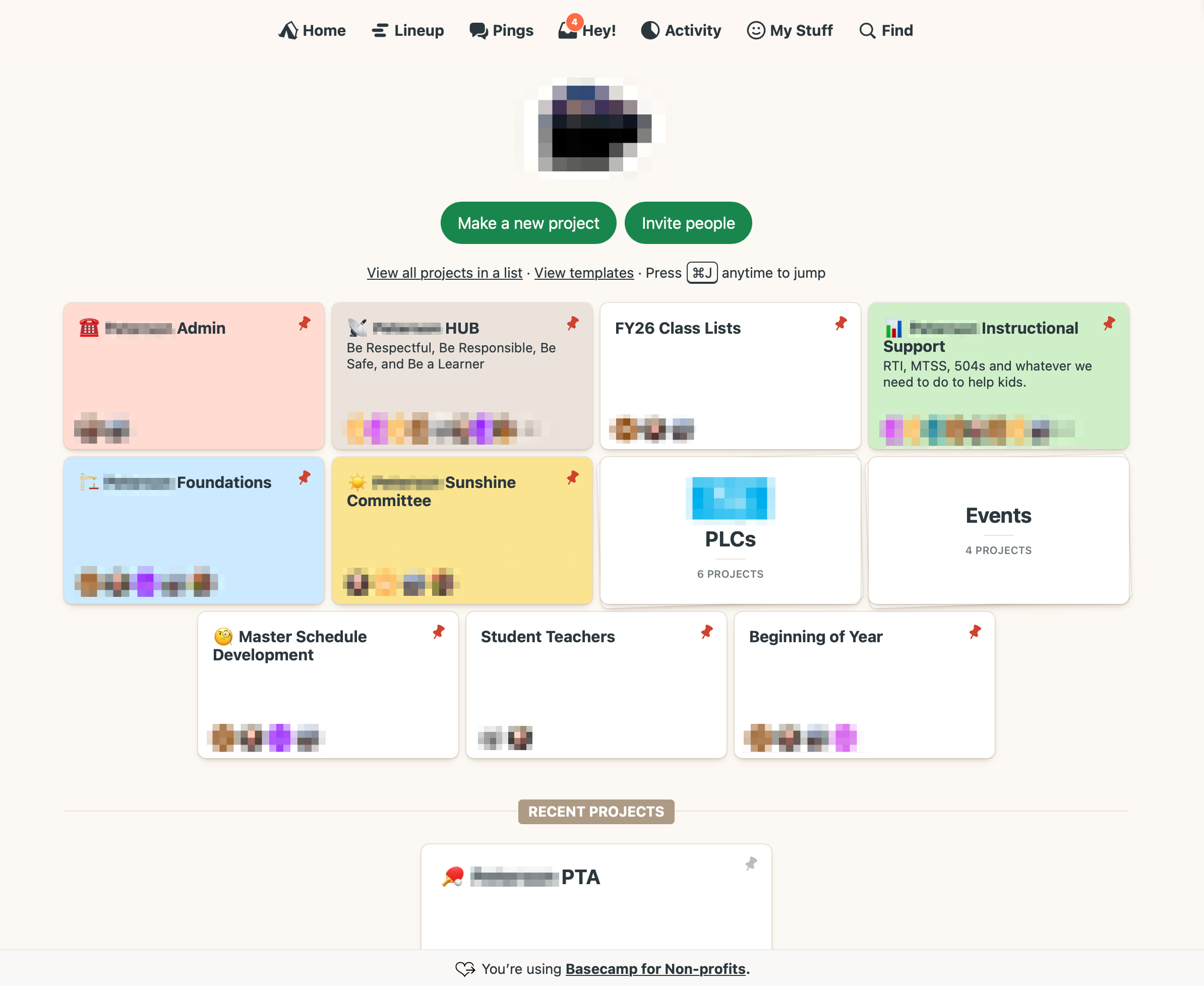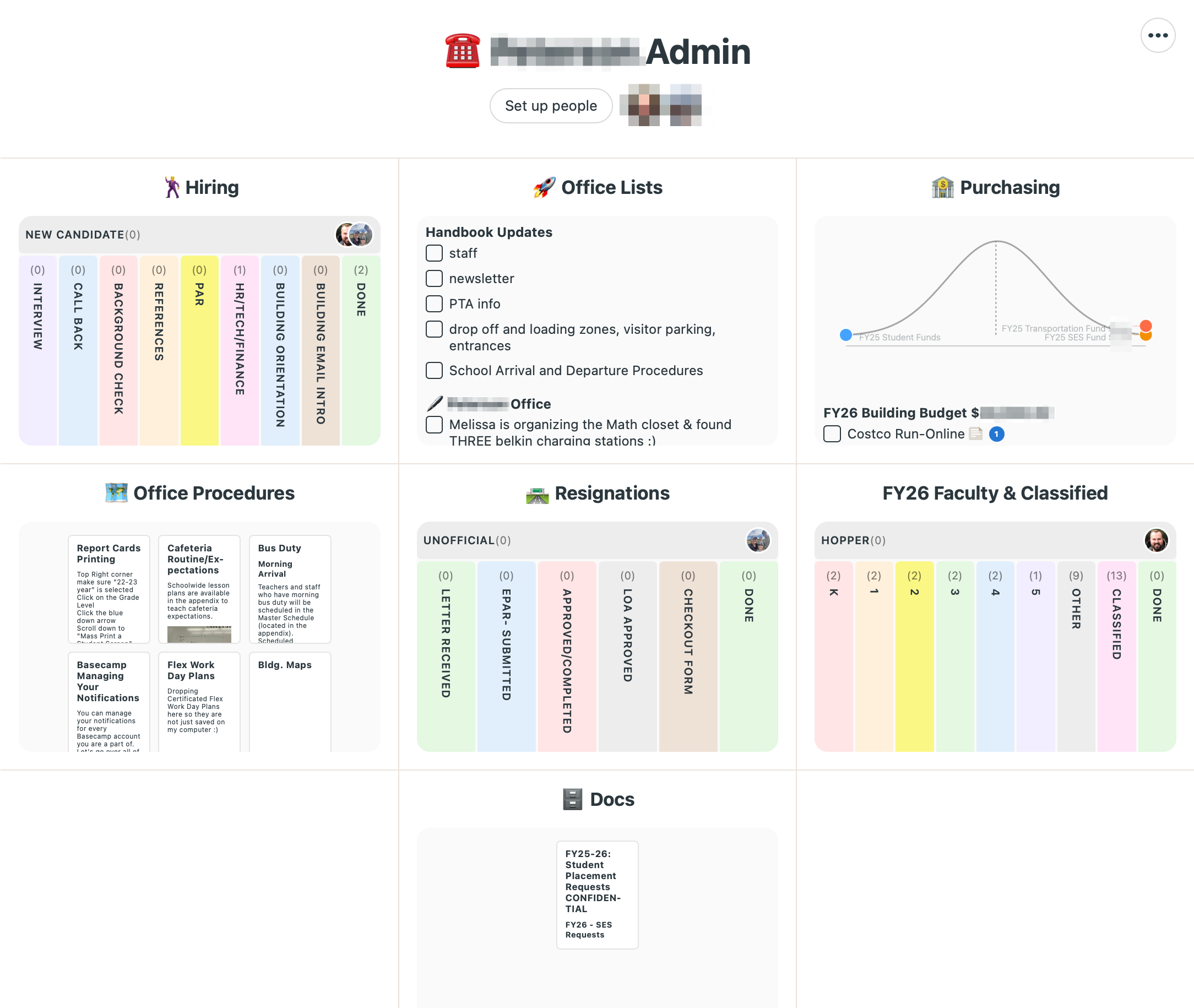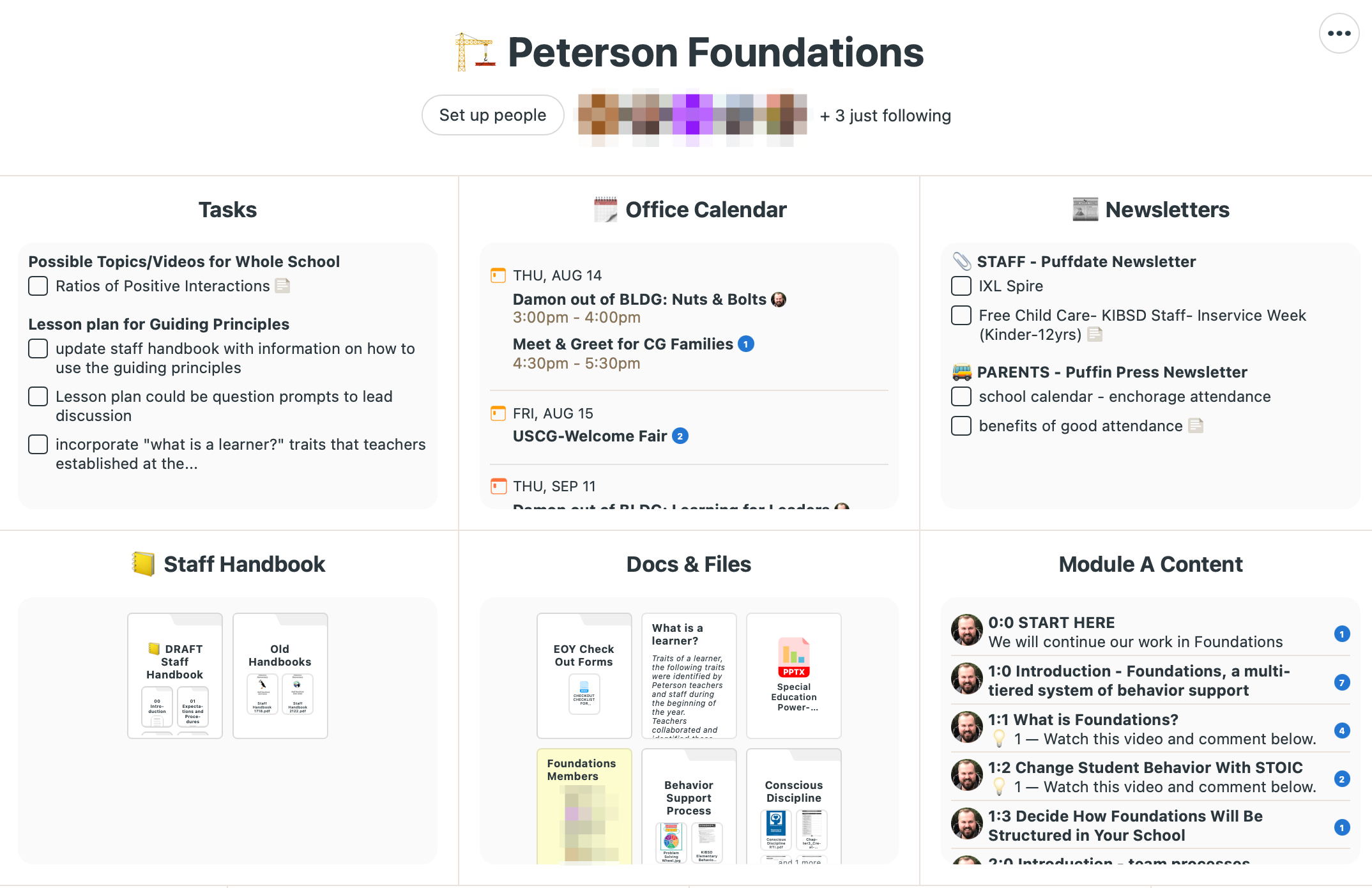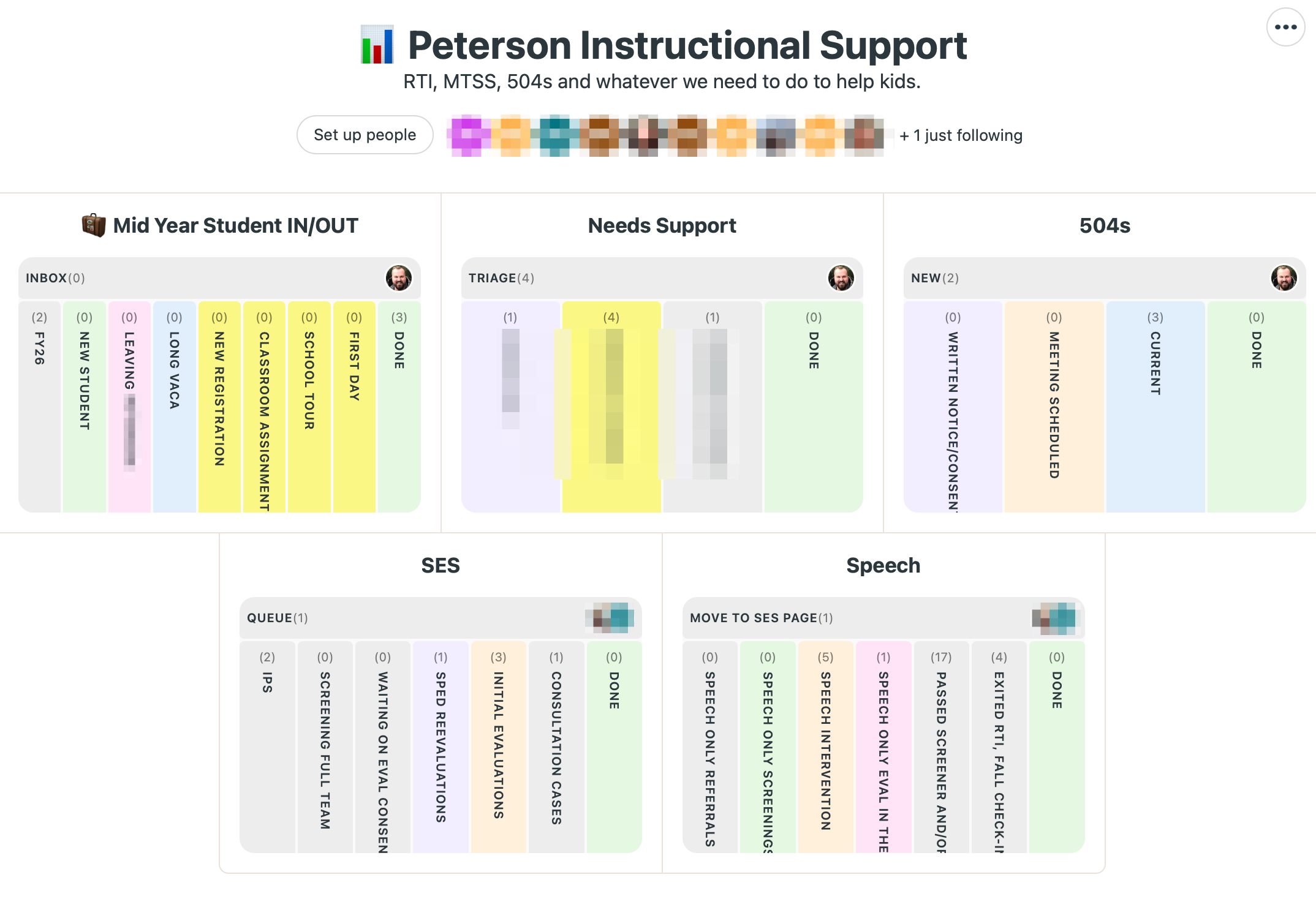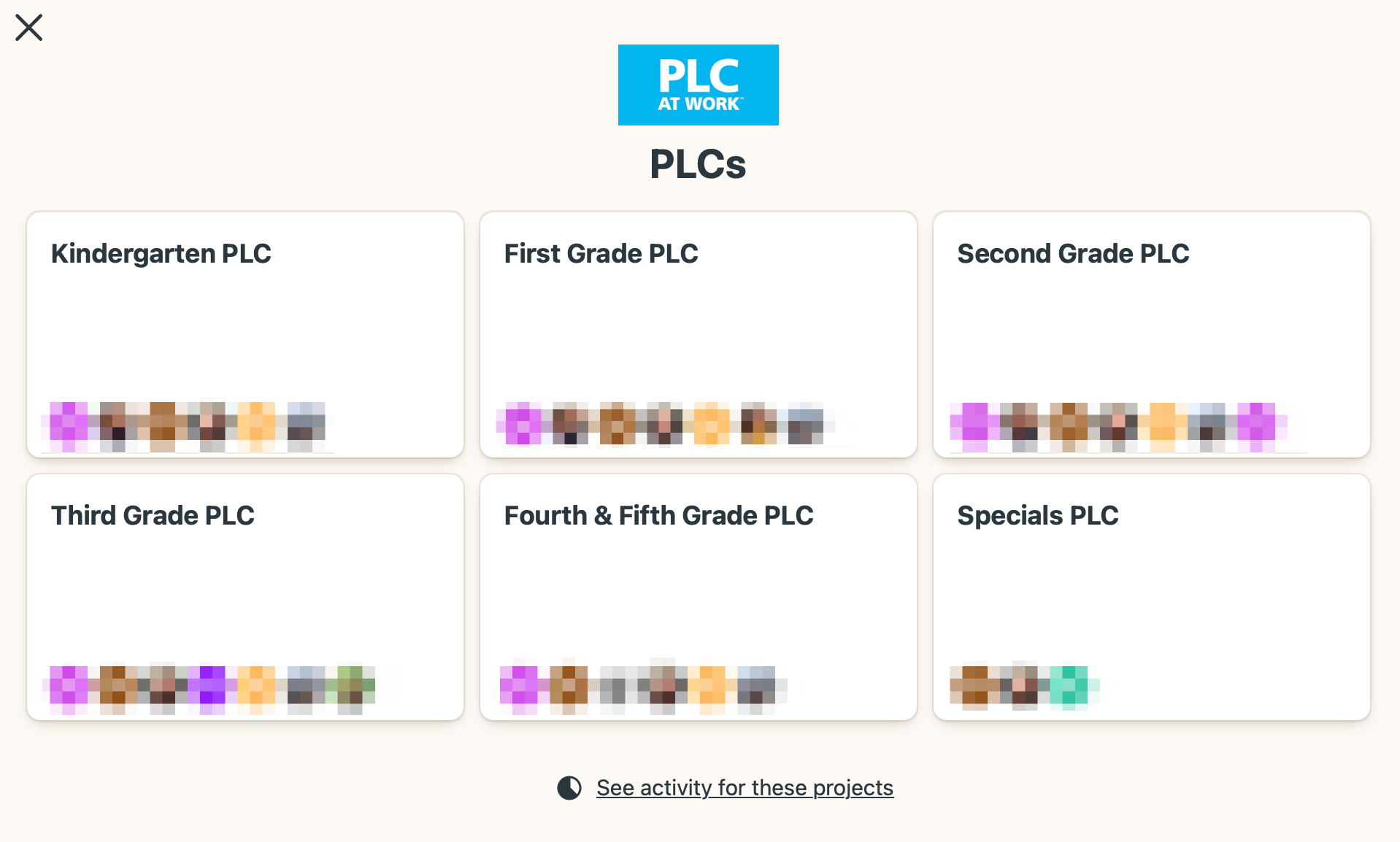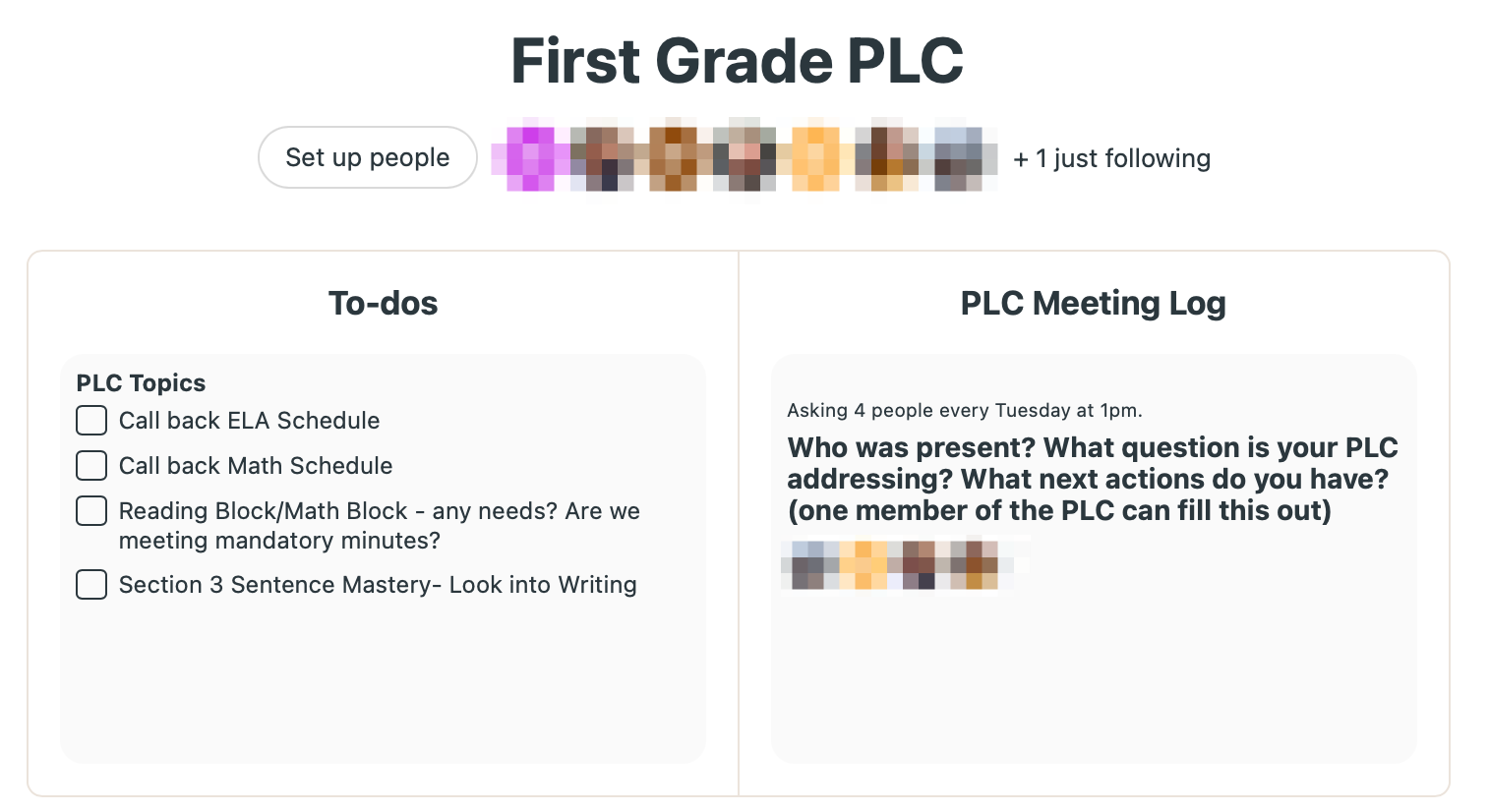
Dear Principals and School District Administrators,
Here we are at the beginning of another school year. Things are exciting, kids are smiling, teachers are begging to get into the classrooms, and a clean slate of a year is before us all. As you look ahead to the year, if you are like most administrators, you are probably thinking of ways to make everything better for everyone. Continuous improvement, am I right!?
One thing that you should consider is the modes in which you are communicating and working with your staff.
A couple of things to consider
- Are you using email to communicate with people inside your organization?
- Are you using email to try to make decisions, approve items, or collaborate?
- Do your email threads go on for days?
- Are you using a half dozen (or more) super specific tools for certain types of processes?
- Are you relying on giant shared spreadsheets with hyper-critical information?
- Are you sharing giant spreadsheets with more than three people?
If you answered "yes" to any of these questions, then you probably are already recognizing pain points that you wish could be better.
Many years ago, I adopted a project management tool, called Basecamp and have benefited from it in several past positions both in schools and in district level departments. Most recently I have been an elementary school principal, and in my first year at this school (now in year four) I began introducing Basecamp as a mode for communication and for use in organizing a plethora of projects.
I encourage you now to consider Basecamp as a tool to make your school better. If you are at a district office level position, I encourage you to look at Basecamp for use within your department.
So what is it good for?
Basecamp allows you to break things down into projects, which allows you to inherently give context to all of your work. People who are part of these projects, and who need to be in the know, receive activity notifications when new information is created or attachments uploaded. Here's a peak into what it looks like for me.
- Here's what my front office project looks like. Several major kanban style charts for major office processes and for organizing staff placements. To-do lists keep us communicating and connected. Hill charts help visualize the major budgets codes. Docs in the Office Procedures collect standard emails, announcements, ridiculously specific procedures (like what to do when there is a bear on campus). Whenever something is done for the first time, we document with text, attachments, or pictures.
- Committees like our Foundations team can keep a school calendar, gather ideas for newsletters, and facilitate PD with discussion threads.
- Our Instructional Support Team can track student needs and make sure nobody falls through the cracks.
- Project stacks for PLCs can help group these similar projects together and then "See activity for these projects" allows me to stay up to date on all of work being done in each project.
- Each individual PLC project allows teams to keep their to-dos in a shared space and a meeting log automatically gets emailed out at a scheduled time. Meeting logs can be emailed back as a response, or entered directly into Basecamp.
Why choose Basecamp over other similar tools?
The makers of Basecamp call their apps "opinionated," an so Basecamp has a way of encouraging a certain way of working. This happens to match well to the way schools need to work together. Basecamp was actually originally designed for use in businesses that need to work remotely and so there are many fundamental functions and features that help asynchronous communication. What this means in schools, is that Basecamp can help facilitate communication without having to have meetings. Teachers are busy in their classrooms and have limited time to collaborate, however, we know that collaboration is key.
What John Hattie calls "collective teacher efficacy" might also be called social enforcement of high achievement, high-quality systemic knowledge, or simply a highly functional team. Collective teacher efficacy also happens to be the HIGHEST RESEARCHED EFFECT SIZE, above any other single thing we are doing in our schools. That's crazy! Communication really is key. With teachers so busy, Basecamp helps keep the communication flowing.
What John Hattie calls "collective teacher efficacy" might also be called social enforcement of high achievement, high-quality systemic knowledge, or simply a highly functional team. Collective teacher efficacy also happens to be the HIGHEST RESEARCHED EFFECT SIZE, above any other single thing we are doing in our schools. That's crazy! Communication really is key. With teachers so busy, Basecamp helps keep the communication flowing.
So where do I start?
- Sign up for a free account.
- Start slow. Use it in your school office and invite the people you work with most.
- Get familiar with all the tools. Watch online videos and learn what everything does. Rely on Basecamp/learn for fast tutorials to get you up to speed.
- Set up processes in Basecamp rather than relying on email and post-it notes.
- Start using it with small teams.
- Build new things out and embrace additional tools/features when a need is bugging you. Don't just create a bunch of stuff with hardly any content. Don't overthink it, let needs drive the addition and use of features.
- Regularly assess how things are organized and how you are using the tools. Ask people how a set up is working for them, and see if they have ideas for how to make it better.
- Join the Basecamp Community to learn from some of the best people around.
Good luck and let's all have a great year!
Damon
